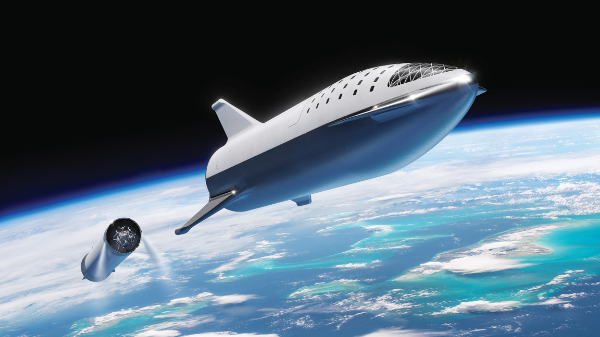
Future of Space Travel: When will we be able to travel to space?
If 2020 was the year of being shuttered at home, the past 12 months have been a surprisingly fruitful period for travel in outer space. Historic milestones were achieved when billionaires Richard Branson of Virgin Galactic and Jeff Bezos of Amazon and Blue Origin fame jettisoned into space through their respective space-tourism companies, while fellow tech mogul Elon Musk’s SpaceX successfully launched and completed the first all-civilian mission with the Inspiration4 flight in September.
Interest in boldly going where no man (well, few) has gone before is increasing, with a recent report by Northern Sky Research, the satellite market-research and consultancy company, predicting that space tourism as an industry will rake in some US$14 billion by 2028.
Despite these groundbreaking steps, however, the undeniable fact is that space missions cost exorbitant amounts of money. To put things into perspective, NASA (the United States’ National Aeronautics and Space Administration) puts the cost of sending an astronaut to the International Space Station (ISS) at some US$81 million. Branson’s six minutes of weightlessness aboard Virgin Galactic’s SpaceShipTwo, meanwhile, had an eye-watering price tag of US$841 million. But that pales in comparison to the staggering US$5.5 billion that Bezos paid for his four-minute suborbital flight on a rocket ship built by Blue Origin. Granted, it didn’t put too large a dent in his pocket, given that the world’s richest man is said to have a fortune hovering around the US$200 billion mark.
Yet, as private companies like SpaceX continue to make breakthroughs in technologies such as reusable rockets, space travel could be the Next Big Thing for a wealthy elite jaded with private jets and superyachts. But what would this future look like?
Going to the Brink
Two broad categories are set to emerge in space tourism. The first is orbital flight, which is defined as being in space for at least one full orbit of Planet Earth. The second, more imminent one is suborbital travel, where passengers fly just to the brink of space before descending back to the Earth’s surface. Unsurprisingly, since the latter is much simpler to accomplish, a full-fledged industry catering to commercial suborbital travel is likely to materialise more quickly.
Leading the charge in this sector are Blue Origin and Virgin Galactic. The former is expecting to price tickets for such trips from US$200,000-300,000 per person, while the latter announced in August that its space flights would start at US$450,000 per seat. Another company, Florida-based Space Perspective, is already accepting seat reservations for its offering, a pressurised capsule dubbed ‘Spaceship Neptune’ that is carried by hot-air balloon to an altitude of 30,000m. There’s space for eight passengers and a pilot, with tickets priced at US$125,000.
While commercial suborbital trips may not satiate the needs of star trekkers seeking to explore outer space, the impact such technology will make on the travel industry are far reaching. Indeed, experts are already predicting that this mode of transport could one day replace long-distance air travel as a much faster option. As one UBS report to potential investors states, “Space tourism could be the stepping stone for the development of long-haul travel on earth serviced by space.”
SpaceX has already announced plans to fly people across the globe in just minutes aboard its Starship rocket, citing as an example that the usual 15-hour flight between New York to Shanghai could be completed in less than 40 minutes aboard such a vessel. It’s a tempting option to consider if you have the means to take advantage of it.
Full Orbit
Although much further on the horizon and exponentially more expensive, orbital tourism is the space-travel dream that has captivated our minds. Colonising the Moon and Mars also falls under this category, with governmental agencies and privately owned space companies rushing to create the technologies and infrastructure to bring that vision to fruition.
SpaceX, Boeing and Axiom Space – whose team of predominantly ex-NASA employees hopes to begin construction of the first commercial space station by 2024 – have already announced plans to launch civilian space tourists to the ISS from next year. Although prices are yet to be revealed, previously announced SpaceX contracts indicate the venture would likely cost US$50 million per person aboard a Crew Dragon rocket. NASA, meanwhile, would pocket US$35,000 a night per tourist.
With such trips more within reach than ever, many are betting on orbital vacations becoming a growing trend in the coming years, and experts predict that space-holiday infrastructure – including orbital and moon-based hotels – would be a revenue-raking business.
Space-cation
Sacramento-based startup Orbital Assembly Corporation has unveiled plans to build the world’s first full space hotel by 2027. Named Voyager Station, it is slated to be a luxury resort that can accommodate up to 280 guests and 112 crew members. Designed in the shape of a rotating wheel – which would generate artificial gravity equivalent to roughly one-sixth of that of Planet Earth – it is set to include a restaurant, bar, concert hall, gym and even a cinema for good measure.
Another such project, Orbital Reef, comes via a collaboration between Sierra Space, a Colorado-based spacecraft and satellite manufacturer, and Bezos’s Blue Origin. Featuring a modular design, its promotional materials bill it as ‘the premier mixed-use space station in low Earth orbit for commerce, research and tourism by the end of this decade’.
Although the proposition of such outer-space escapades may seem to belong more in a sci-fi film than in real life, the progress currently being made towards that universe goal cannot be discounted. Perhaps one day in the not-too-distant future, the question wealthy vacationers ponder won’t be “where on Earth should we go?” but rather “where in Space…?”













